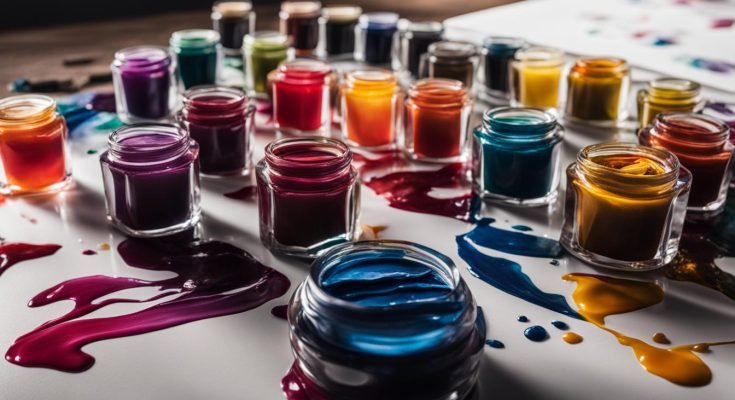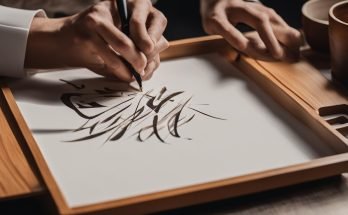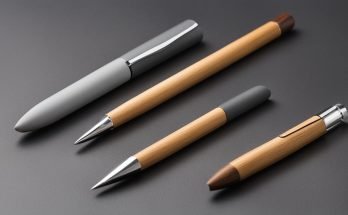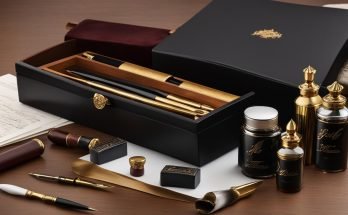Calligraphy Dipping Inks: Discover the Magic of Colorful Writing
Are you ready to elevate your calligraphy game? Dive into the world of calligraphy dipping inks and unlock a spectrum of mesmerizing colors for your writing projects. From classic blacks to vibrant metallics and waterproof options, there is a calligraphy ink for every creative need.
Calligraphy dipping inks come in an array of options, with an impressive variety of hues to choose from. Whether you prefer rich, traditional shades or want to experiment with bold and modern colors, there is a calligraphy ink that suits your style.
Discover the joy of using calligraphy ink bottles and inkwells for a more traditional and immersive writing experience. The act of dipping your pen into an inkwell and watching the liquid flow onto the nib is both satisfying and inspiring.
When it comes to the best calligraphy inks, options like metallic calligraphy ink and waterproof calligraphy ink stand out. Metallic inks add a touch of elegance and shimmer to your writing, while waterproof inks ensure that your beautiful creations won’t smudge or fade when exposed to water.
Explore the world of colored calligraphy inks and bring your artwork to life with a captivating palette of hues. These vibrant colors open up new possibilities for expressing your creativity and making your writing truly stand out.
Step into the world of dip pen inks and rediscover the charm of vintage calligraphy inks. These inks evoke a sense of nostalgia and add an antique touch to your creations. Experience the beauty of tradition while enjoying the versatility of these exquisite inks.
Key Takeaways:
- Calligraphy dipping inks offer a wide range of colors to choose from.
- Using ink bottles and inkwells can enhance the traditional calligraphy experience.
- Metallic and waterproof calligraphy inks are popular choices for added elegance and durability.
- Colored calligraphy inks bring vibrancy and excitement to your artistic projects.
- Exploring vintage calligraphy inks adds a touch of nostalgia to your creations.
Choosing the Right Nib, Ink, and Paper
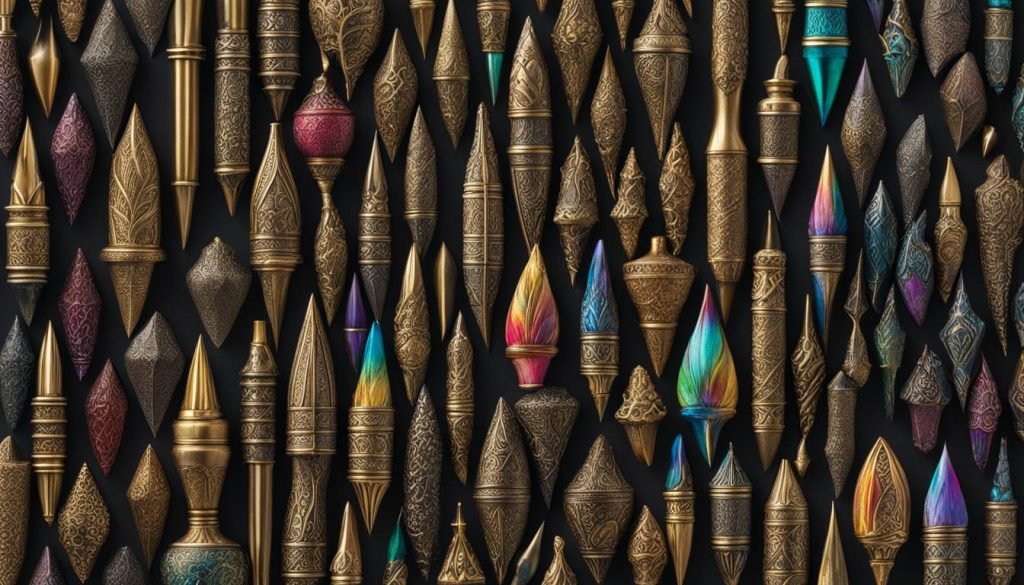
To start your journey with dip pens, it’s essential to have the right tools. Let’s explore the key components that will help you create stunning calligraphy and artwork.
Nibs: Finding the Perfect Fit
The nib is the heart of a dip pen, determining how the ink flows onto the page. There are different types of dip pen nibs, each with its unique qualities. One popular option is the G-nib, known for its versatility and beginner-friendly nature. It offers a good balance of flexibility and control, making it ideal for both beginners and experienced artists.
When choosing a nib, consider factors such as line thickness, flexibility, and the nib’s ability to hold ink. Experiment with different nibs to find the one that suits your desired style and preferences.
Nib Holders: Ensuring Comfort and Control
A nib holder is a crucial tool for using dip pens, providing comfort and control during your writing or drawing session. There are various types of nib holders, but for beginners, it’s recommended to start with a straight nib holder. The straight design enhances stability and control, making it easier to create consistent strokes.
Inks: Adding Vibrancy to Your Art
Now, let’s talk about the ink that brings your dip pen creations to life! Sumi ink is a popular choice for dip pens, known for its deep black color and smooth flow. However, there are other inks specially formulated for different artistic purposes. Manga ink, Indian ink, and drawing ink are other options that provide unique qualities, such as waterproof properties or compatibility with specific artistic techniques.
Paper: Ensuring Optimal Performance
The right paper can make a significant difference in achieving the best results with your dip pen. Bristol paper is a preferred choice for calligraphy and artwork, offering a smooth surface and excellent ink absorption. Another excellent option is hot press watercolor paper, which provides a similar smoothness while offering additional durability and versatility.
Using the appropriate paper helps prevent feathering and promotes smooth ink flow, enabling you to create cleaner and more precise lines.
Nib Preparation: A Clean Start
Before you start using a new nib, it’s crucial to prepare it properly. Nibs often come with an oil coating applied by the manufacturer, which can hinder ink flow. To remove this coating, gently clean the nib using mild soap and warm water. Ensure the nib is completely dry before dipping it into the ink.
By choosing the right dip pen nib, nib holder, ink, and paper, you’ll set yourself up for a delightful writing or drawing experience with quality results.
Understanding the Angle
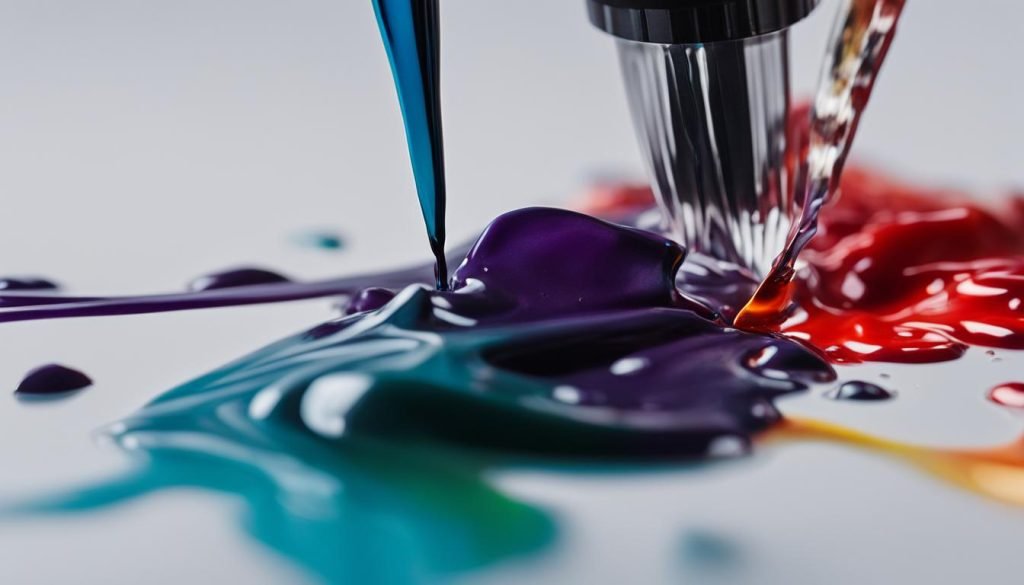
Controlling the angle of the dip pen is crucial for achieving smooth and precise lines. When using a dip pen, it is important to understand the relationship between the angle of the pen and the ink flow. By adjusting the angle, you can control the thickness of the lines and the amount of ink that is released onto the paper.
To ensure proper ink flow, it is recommended to dip the nib into the ink bottle in a way that covers the breather hole. This allows the ink to flow smoothly without any interruptions. Take care not to dip the nib too deeply, as it may cause excess ink to collect on the nib, resulting in blotchy lines.
When applying the pen to the paper, it is essential to maintain a consistent angle of approximately 45º. This angle allows for optimal ink flow and line control. When exerting more pressure on the downstrokes and decreasing the pressure on the upstrokes, you can achieve variations in line thickness. This technique adds depth and dimension to your calligraphy or artwork.
Regularly cleaning the nib is necessary to prevent any ink build-up or clogging. You can use a clean cloth or tissue to gently wipe away any excess ink. This ensures that the lines you create with your dip pen remain clean and consistent.
After completing your artwork or calligraphy, it is important to allow the ink to dry completely before touching or handling the paper. This prevents smudging or smearing and helps maintain the integrity of your lines. The drying time may vary depending on the ink used, so be patient and allow sufficient time for the ink to dry.
To practice and improve your control over the dip pen, it is recommended to start with basic strokes and gradually progress to more complex shapes and calligraphy. Practicing different angles and experimenting with various line thicknesses will help you develop a better understanding of your dip pen and enhance your skills.
Tips for Achieving Clean and Controlled Lines:
- Maintain a consistent angle of approximately 45º for optimal ink flow and line control.
- Dip the nib in the ink to cover the breather hole, ensuring proper ink flow.
- Apply more pressure on downstrokes and less pressure on upstrokes to control line thickness.
- Clean the nib regularly to prevent ink build-up and clogging.
- Allow sufficient drying time before handling the paper to avoid smudging.
| Angle | Ink Flow | Line Thickness | Ink Control | Drying Time |
|---|---|---|---|---|
| 45º | Optimal ink flow | Variations in thickness | Controlled lines | Allow sufficient drying time |
Weighted Lines
Once you’ve mastered the basic dip pen techniques, you can take your linework to the next level by creating weighted lines. This technique adds depth and dynamics to your artwork, making it more visually striking.
To get inspiration and guidance on when to use thick and thin lines, look no further than manga and comic artists. These talented creators have perfected the art of using varied line weights to convey different emotions, create depth, and bring their characters to life.
Unlike other pens like fountain pens or brush pens, dip pens require more control and practice to achieve the desired line thickness. However, the effort is well worth it. The versatile nature of dip pens allows you to experiment with a wide range of inks, giving you unparalleled choices in achieving the desired effects in your artwork.
“The way a line is drawn can profoundly affect the overall impact of a piece. Understanding how to use thick and thin lines can bring your artwork to life, adding a sense of movement, dimension, and depth.” – Manga Artist
Furthermore, dip pens also offer the opportunity to explore color in your linework. By swapping out different ink colors, you can create visually stunning effects that add another layer of interest to your artwork.
Developing mastery with a dip pen takes time and practice, but the results are truly rewarding. As you continue to experiment and refine your techniques, you’ll discover the unique possibilities that dip pens offer for creating breathtaking artwork.
Tips for Creating Weighted Lines:
- Practice controlling the pressure applied to the nib to achieve varying line thickness.
- Experiment with different ink consistencies and viscosities to achieve different effects.
- Study manga and comic artwork to understand how different line weights are used to convey emotions, movement, and depth.
- Try combining thick and thin lines in your artwork to create contrast and visual interest.
- Take your time and practice regularly to improve your control and precision with the dip pen.
Conclusion
Learning and using a dip pen for weighted linework can provide a nostalgic and unique art experience. The dip pen’s versatility in ink choice and its ability to create dynamic linework make it an excellent tool for artists seeking creative expression.
Although dip pens require more control and practice compared to other pens, the effort is worth it. By experimenting with different ink types and colors, you can create stunning effects that bring your artwork to life.
Comparing dip pens to both fountain pens and brush pens allows you to understand the distinct benefits and limitations of each tool. While dip pens excel in ink control for achieving beautiful line variations, fountain pens offer convenience and consistent ink flow, and brush pens provide expressive strokes for bolder effects.
Through persistent practice and experimentation, you can develop your own unique style and confidently create beautiful artwork with a dip pen. Embrace the nostalgia, embrace the challenges, and embrace the incredible artistry that comes with mastering the art of dip pen linework.
FAQ
Can I use any type of ink with a glass nib dip pen?
Glass nib dip pens are compatible with various inks, including calligraphy inks, metallic inks, waterproof inks, and colored inks. Just ensure that the ink is suitable for dip pen use.
How do I clean a glass nib dip pen?
Cleaning methods may vary depending on the pen. Some glass nib dip pens are easier to clean than others. It is recommended to rinse the pen with water after use and gently wipe the nib with a soft cloth to remove any residual ink.
What type of nib holder should I use for a dip pen?
Straight nib holders are generally recommended for beginners due to their versatility and ease of use. However, there are various nib holders available, and you can choose one that feels comfortable in your hand.
Do I need to prepare the nib before using a dip pen?
It is essential to prepare the nib by cleaning it to remove any oil coating applied by the manufacturer. This can be done by gently washing the nib with soap and water, or by wiping it with rubbing alcohol.
How do I achieve smooth and controlled lines with a dip pen?
Controlling the angle of the dip pen is crucial. Hold the pen at a 45-degree angle and dip the nib into the ink to cover the breather hole. Apply more pressure on downstrokes and less pressure on upstrokes to control the line thickness.
What type of paper should I use with a dip pen?
It is important to use appropriate paper to ensure smooth ink flow and prevent feathering. Bristol paper and hot press watercolor paper are commonly used for dip pen calligraphy.
How can I create weighted lines with a dip pen?
Creating weighted lines requires practice and control. By studying manga and comic artists, you can learn when to use thick and thin lines to add dynamics to your artwork.
How do dip pens compare to fountain pens and brush pens?
Dip pens offer versatility in ink choice and the ability to create unique linework. They require more control and practice compared to other pens but provide a nostalgic and unique calligraphy experience.
What can I expect from using a dip pen?
Using a dip pen for weighted linework can be a rewarding experience, albeit requiring time and practice to master. With experimentation and practice, you can develop your own style and create beautiful artwork.

